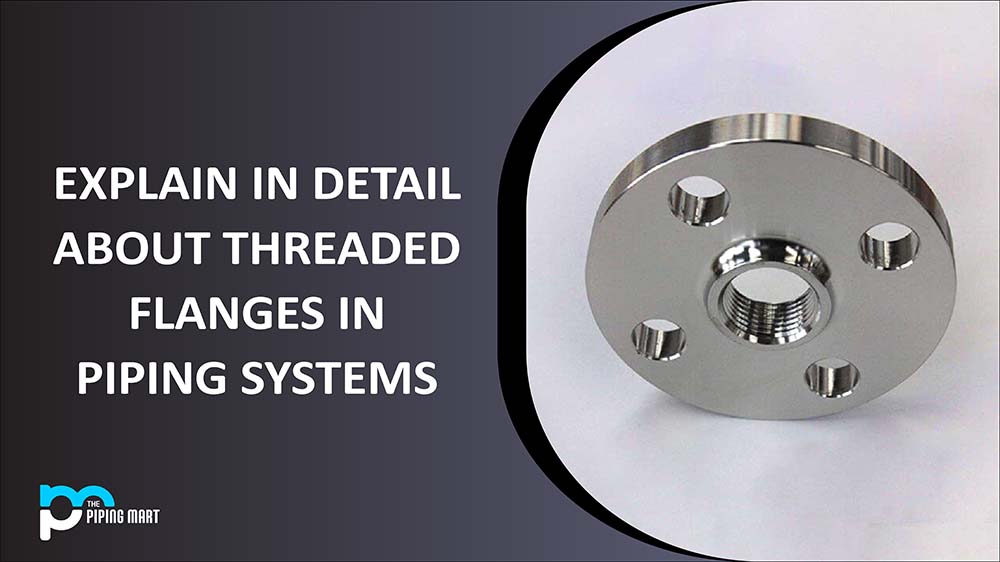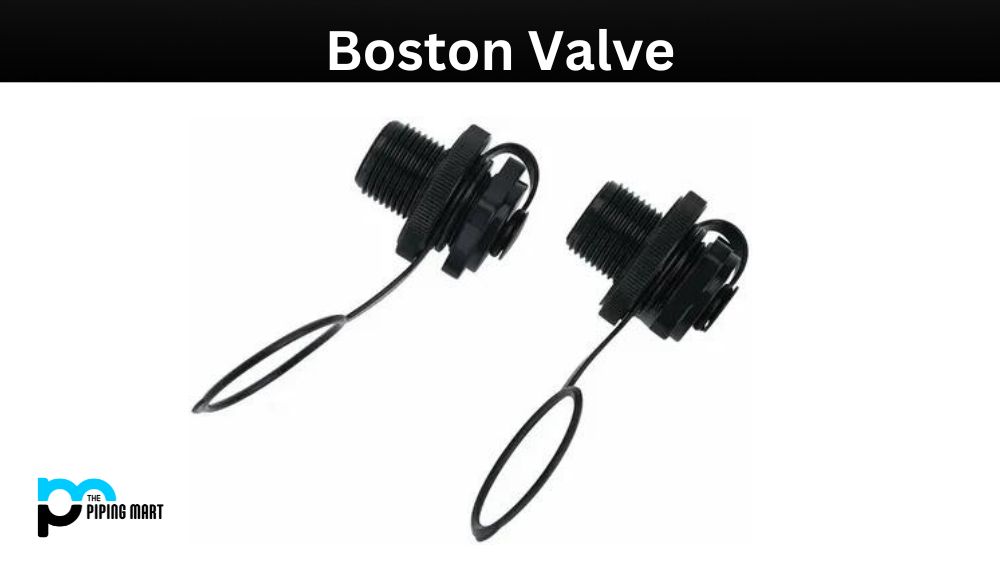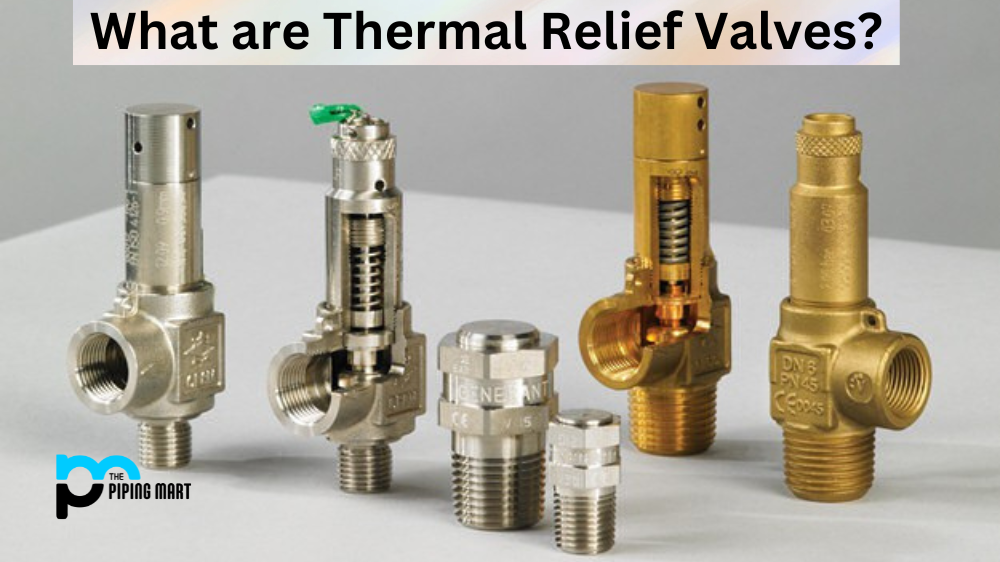What are Threaded Flanges?
A screw thread is used to attach the threaded flange, also known as a “screwed flange,” to a pipe. The pipe’s end is given a male thread, and the flange’s bore is given a female thread. The male-threaded pipe is then screwed into the female-threaded flange. The ASME B1.20.1-compliant threaded flange is a type of flange that can be used in piping systems when it is impossible to weld the flange to the pipe, such as in highly explosive places where welding could pose a risk. An external taper pipe threaded pipe is used to attach the threaded flange to the pipe. Most engineering organizations restrict their use to utility services such as instrument air, plant air, nitrogen, potable water, and raw water up to class 300 rating, and size ranges between 1/2″ and 4″ inches.
In most cases, cast iron and galvanized piping use threaded flanges. The specifications for threaded joints are following para. Apply to threaded flanges. Their use is not advised for any service where crevice corrosion, extreme erosion, or cyclic loading are likely to occur, per the requirements of this paragraph.
Due to the potential for leaking through the threads, the bending stresses in the piping system must be thoroughly evaluated when utilizing a threaded flange. Using threaded flanges for high-pressure service at room temperature is possible up to class 2500. A weld-neck slip-on or socket weld flange has greater integrity than a threaded flange. A threaded flange can be seal welded to stop leaking through the threads. The seal weld is not thought to give a threaded joint any strength, though.
According to ASME B31.3, threaded flanges may only be restricted to Category D Fluid service if the pipe ends protrude through the flange face and serve as a gasket sitting surface. Although the threaded flange design comes in various diameters and pressure ratings, it is often used for small piping systems or those with a diameter of fewer than 4 inches. Additionally, it is normally only used in non-toxic, low-pressure, and low-temperature systems. Threaded flanges in the 12-inch to 2-inch range are far more prevalent than those in the 2-inch range and larger. The faces of threaded flanges are flat and elevated because they are used in lower-pressure applications.
The thread geometry would distort in high-temperature applications, frequently resulting in leakage. Hence they are not appropriate for certain applications. The main benefit of threaded flanges is that they don’t require welding to join a pipe. The ability to form joints without welding is a significant advantage. It is critical in some settings and industries, such as explosive zones (Ex rated areas), including gas stations, hexane facilities, stores that house flammable liquids, etc. A potential source of ignition is eliminated if no welding is necessary. A threaded flange union has the additional benefit of being quicker and simpler to construct and disassemble than a welded flange joint.
Because it is challenging to cut a thread on pipes with a thin wall thickness, threaded flanges are usually not recommended for use with such pipes. A seal weld may occasionally be utilized to strengthen the flange and lower the risk of leaking. The flange’s integrity will rise with the addition of a seal weld, but because the weld makes the union permanent, it becomes more challenging to install and disassemble.
As discussed, most engineering organizations and associations restrict the usage of threaded flanges to pressure classes 300 and lower and a size range of 12 to 4 inches. The lack of a weld makes threaded flanges more prone to leakage than their welded joint counterparts, and flange misalignment increases the risk of seal damage. These factors make threaded flanges a bad choice for risky systems where leaks could have disastrous effects.
Threaded flange assembly up to Class 400 rating: According to ASME B16.5 para 6.9.1, a threaded flange must have concentric threads with the axis of the flange opening, and alignment deviations concerning the flange face must not be greater than 5mm/m. The intention is for the threaded end of the pipe to be close to the making surface of the flange when threaded flanges are connected with a threaded-end pipe. This is possible with flanges rated up to class 400. The internal thread length in Classes 150, 300, Threaded Flanges and 400 flanges complies with ASME B1.20.1, as indicated in Appendix I of ASME B16.5.
The available thread length or the L2 for a 24-inch pipe is 3.25 according to ASME B1.20.1 specifications (83 mm). This measurement corresponds to the 83 mm minimum thread length (T) for a 24 “Flange up to class 400 under ASME B16.5. Putting together Threaded Flanges for Class 600 and above:
However, the minimum thread length (T) through the flange hub exceeds the ASME B1.20.1 requirements for threaded flanges in Class 600 and higher classifications. For instance, according to Table 2 of ASME B1.20.1, the minimum thread length (T) for an ASME B16.5 24-inch class 600 rated flange is 93 mm, but the available thread length (L2) for a 24″ pipe is 3.25″ (83 mm). To comply with ASME B16.5, the pipe wall thickness of schedule 80 or heavier must be used when using threaded flanges in Class 600 or higher. The length of the effective external thread on the pipe end must be increased to a value greater than that specified in ASME B1.20.1 so that the final part of the pipe is fairly close to the mating surface of the flange. For flanges over class 600, the increased threading length on the pipe is specified in Table 1-1 of ASME B165. This specification also advises employing power equipment to achieve the required interaction to bring the pipe end close to the flange face when installing threaded flanges Class 600 and higher.
What are the performance features of Threaded Flanges:
The flange’s performance characteristics may be influenced by various other elements but are crucial to consider. The following is a list of the properties:
-
Durability:
It is a pipe flange’s resilience or toughness under pressure or stress. The pipes’ compatibility with the flanges, the design, and the material’s strength affect durability.
-
Simple to Assemble:
It is a qualitative indicator of how effectively the assembly and disassembly processes work. The simplicity of assembling and disassembling is essential for applications where the flange is used as a permanent or temporary connection.
-
Weight:
It is the flange’s bulk or weight. It is based on the size and density of the substance. When dealing with high or large-density flanges, industrial buyers must consider the strength of the pipe or pipe support.

Pipingmart is B2B portal specializes in industrial, metal and piping products. Also, share latest information and news related to products, materials and different types grades to help business dealing in this industry.




